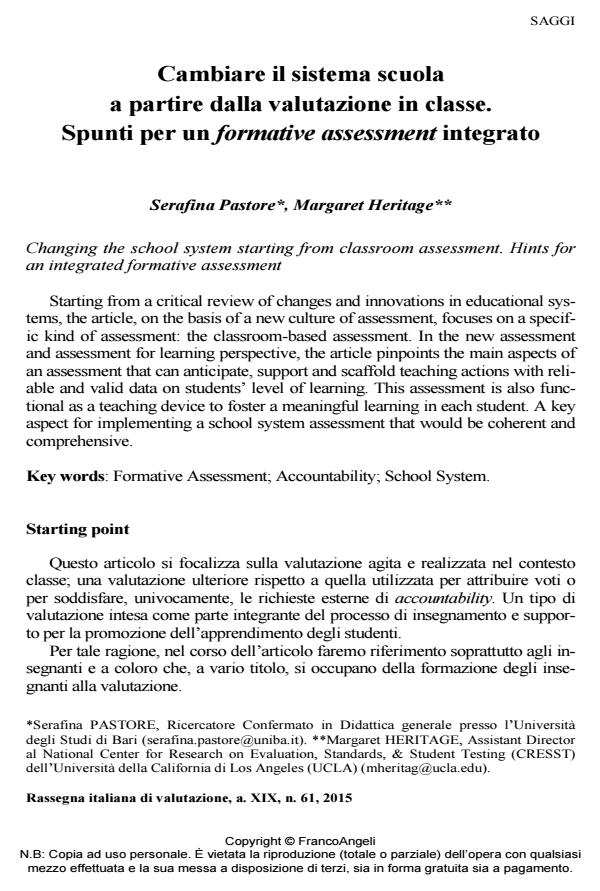Changing the school system starting from classroom assessment. Hints for an integrated formative assessment
Journal title RIV Rassegna Italiana di Valutazione
Author/s Serafina Pastore, Margaret Heritage
Publishing Year 2016 Issue 2015/61
Language Italian Pages 16 P. 102-117 File size 251 KB
DOI 10.3280/RIV2015-061007
DOI is like a bar code for intellectual property: to have more infomation
click here
Below, you can see the article first page
If you want to buy this article in PDF format, you can do it, following the instructions to buy download credits

FrancoAngeli is member of Publishers International Linking Association, Inc (PILA), a not-for-profit association which run the CrossRef service enabling links to and from online scholarly content.
Starting from a critical review of changes and innovations in educational systems, the article, on the basis of a new culture of assessment, focuses on a specific kind of assessment: the classroom-based assessment. In the new assessment and assessment for learning perspective, the article pinpoints the main aspects of an assessment that can anticipate, support and scaffold teaching actions with reliable and valid data on students’ level of learning. This assessment is also functional as a teaching device to foster a meaningful learning in each student. A key aspect for implementing a school system assessment that would be coherent and comprehensive.
Keywords: Formative Assessment; Accountability; School System
Serafina Pastore, Margaret Heritage, Cambiare il sistema scuola a partire dalla valutazione in classe. Spunti per un formative assessment integrato in "RIV Rassegna Italiana di Valutazione" 61/2015, pp 102-117, DOI: 10.3280/RIV2015-061007